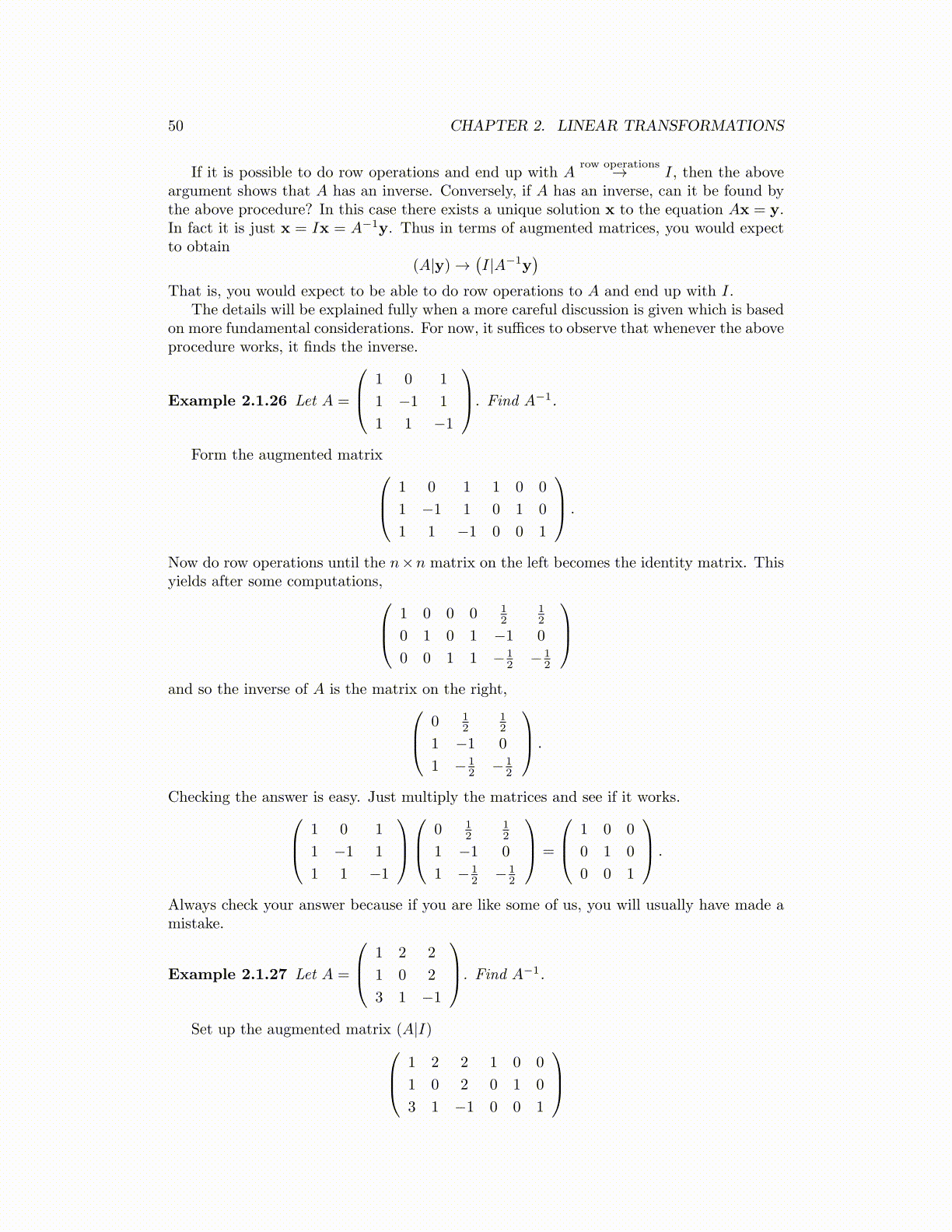
50 CHAPTER 2. LINEAR TRANSFORMATIONS
If it is possible to do row operations and end up with Arow operations→ I, then the above
argument shows that A has an inverse. Conversely, if A has an inverse, can it be found bythe above procedure? In this case there exists a unique solution x to the equation Ax = y.In fact it is just x = Ix = A−1y. Thus in terms of augmented matrices, you would expectto obtain
(A|y) →(I|A−1y
)That is, you would expect to be able to do row operations to A and end up with I.
The details will be explained fully when a more careful discussion is given which is basedon more fundamental considerations. For now, it suffices to observe that whenever the aboveprocedure works, it finds the inverse.
Example 2.1.26 Let A =
1 0 1
1 −1 1
1 1 −1
. Find A−1.
Form the augmented matrix 1 0 1 1 0 0
1 −1 1 0 1 0
1 1 −1 0 0 1
.
Now do row operations until the n×n matrix on the left becomes the identity matrix. Thisyields after some computations, 1 0 0 0 1
212
0 1 0 1 −1 0
0 0 1 1 − 12 − 1
2
and so the inverse of A is the matrix on the right, 0 1
212
1 −1 0
1 − 12 − 1
2
.
Checking the answer is easy. Just multiply the matrices and see if it works. 1 0 1
1 −1 1
1 1 −1
0 1
212
1 −1 0
1 − 12 − 1
2
=
1 0 0
0 1 0
0 0 1
.
Always check your answer because if you are like some of us, you will usually have made amistake.
Example 2.1.27 Let A =
1 2 2
1 0 2
3 1 −1
. Find A−1.
Set up the augmented matrix (A|I) 1 2 2 1 0 0
1 0 2 0 1 0
3 1 −1 0 0 1